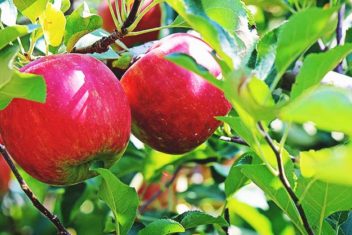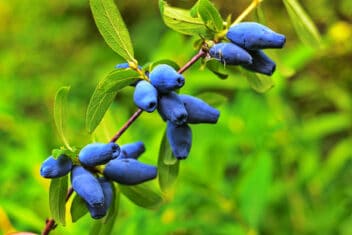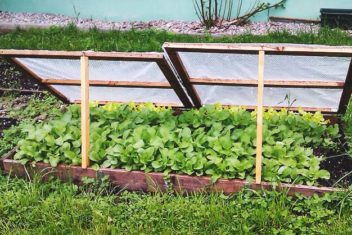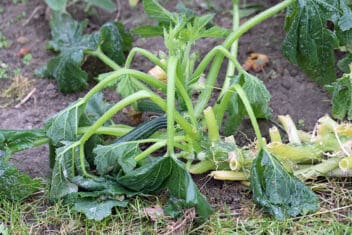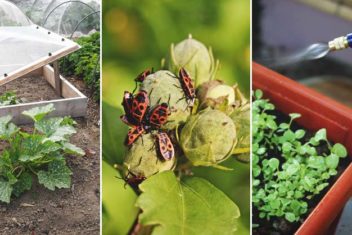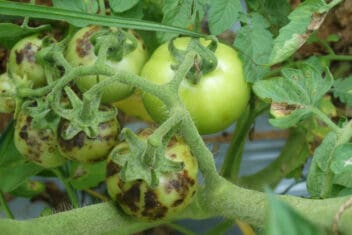When most people think of cover crops, they think of the plants that they grow in their gardens to suppress weeds and fix nutrients over the long winter months. Generally, these cover crops are planted in the late fall, after you’ve harvested all of your vegetables.
Cover crops are essential carpets for your garden and raised beds. They are seeded heavily to provide a variety of benefits. They can add fertility and address certain problems that you might be having in the soil.
Cover crops generally require less work than other plants, but they do require some thought.
One big consideration to make is when you are going to plant. The best time to plant a cover crop will vary depending on your needs. Most people plant cover crops in the fall – but you can also plant cover crops in the spring.
Doing so is a powerful way to improve your soil quickly, especially if you are growing cover crops in rotation. They can also protect fields that will not be planted in the current growing season, helping to prevent them from going totally fallow.
Here are some tips on how to choose and plant the right spring cover crop.
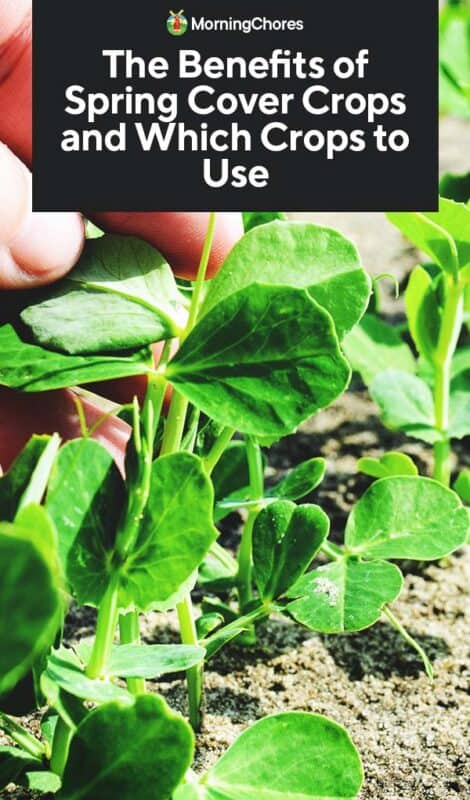
Benefits of Spring Cover Crops
1. Fix Nitrogen and Increase Organic Matter
Some plants, like corn and lettuce, require a lot of nitrogen during their growing season. While you can apply fertilizer to the soil to give your plants what they need, there’s a good likelihood that the nitrogen will either be washed out of the soil by the rain or be depleted over time.
Planting a feeder crop in the spring will help hold nitrogen in place. It can prevent nitrogen from being leached out of the soil. Some plants also draw nitrogen directly from the air (legumes like peas are especially good at doing this). When you till these plants back into the soil, they’ll supply all the nitrogen your plants need to be healthy.
Many people plant cover crops in the fall to fix nitrogen necessary for spring-planted crops, like corn. However, if you plan on growing a fall crop of vegetables, or if you live in an area where a spring cover crop could be planted early (like in February), you can still get these nitrogen-fixing benefits.
2. Prevent Erosion

I don’t know about you, but on my farm, the ground remains very wet throughout much of the spring and early summer months.
Planting a spring cover crop can help prevent erosion. It will also provide habitat for valuable soil organisms like worms, bacteria, fungi, and various protozoa.
You won’t have to worry as much about compaction, meaning you can get into the garden to plant exactly when you’re ready to do so. If you want to plant at your normal times in the late spring (May to June), you will want to get a cover crop in a few months ahead of time.
3. Suppress Early Weeds
A spring cover crop can prevent early weeds from popping up before you get the chance to plant. They can also keep weeds suppressed for garden plots that you intend to plant later in the season (say, for example, if you wanted to plant a fall crop of beets that won’t be seeded until August).
In addition to protection from weeds, spring cover crops can also minimize pathogens in the soil. Not all cover crops prevent pathogens, but there are certain types known as biofumigant cover crops (mustard is an example) that can help eliminate nematodes and fungal pathogens.
Winter vs. Spring Cover Crops
Winter cover crops are those that are sown in late summer or autumn. These generally remain in place until spring, when you’ll smother them or till them into the soil. Spring cover crops, on the other hand, are those that are seeded onto land that will remain fallow for all or part of a season. They can also be planted during windows between crops.
Ideally, the goal of either kind of cover crop is to prevent bare soil. You’ll get all the benefits of cover crops mentioned above with both spring and winter cover crops.
The difference, however, is when you seed. The best use for a spring cover crop is in keeping an area fertile and under control until you’re ready to plant in it. Ideally, this will be a plot that won’t be planted until summer or fall.
For planting early spring crops, like beans and peas, a spring cover crop won’t be the best choice – you’ll want to choose a winter cover crop instead.
However, spring cover crops can be a godsend for people who plant multiple rotations of crops or have a patch of land that will be more or less unused during the early spring and summer months.
They are also ideal for people who want to grow forage for livestock that will be ready for peak grazing in the summer months.
If you’re interested in growing a winter cover crop, we have a thorough post on winter crops that you can read for more information.
How to Choose the Right Spring Cover Crop
1. Figure Out Your Goals
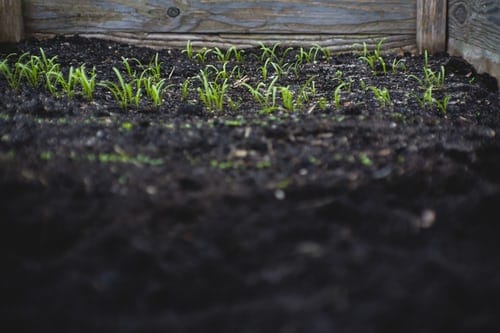
To choose the right spring cover crop, you need to first figure out what your goals are – fix nitrogen, break up crops, last-minute groundcover or even forage for livestock.
If you plan on planting in the patch where you grow your cover crop later in the year, you’ll need to pick a fast-maturing cover crop, like sudangrass or sorghum-sudangrass.
2. Make a Calendar
Once you’ve figured out your goals, make a calendar. Figure out when you need to plant so you aren’t stressed by having to plant under the gun.
Keep in mind that many spring cover crops can be seeded before the weather has cleared for planting other frost-sensitive plants.
In fact, seeding before you’ve even finished getting all the last snowfall for the year can be an effective way to seed a spring cover crop. Any kind of grass seed can be planted right before it snows. The snow will provide a protective covering. When it melts, the moisture will press the seeds into the soil and create a nice, moist seedbed.
Ultimately, timing will play a major role in determining your cover crops’ success. Many cover crops can be planted successfully at various times of the year, but that’s certainly not true of all crops.
3. Ensure You Have the Right Location and Equipment
In some cases, you can seed a cover crop by hand. Otherwise, you’ll want to make sure all of your equipment is in good working order. If you’re going to till, make sure your tiller is in good working order. If you don’t plan to till, consider some of these no-till methods for seeding your cover crop.
Consider the location where you will plant, too. You might want to amend it with compost before planting as this can really maximize the success of your growing. You will also want to factor in your climate. Some cover crop types don’t do well in particularly hot or dry weather – while others do great under these conditions.
4. Test Out a Small Plot
If you aren’t sure how a cover crop will perform in a given area, think about chatting with a local grower for his or her best cover crop recommendations. Make sure you mention the specific goals you have for your cover crop, too.
You might also consider testing out a small patch. This will help you make sure the cover crop is successful in your soil type and climate before you commit to seeding your entire garden or growing area.
Best Spring Cover Crops

1. Sorghum Sudangrass Mix
This annual cover crop is a fast-growing mixture that matures in just 90 days. It is drought-tolerant and helps to smother weeds while also building biomass. It’s great for compacted soil.
It can be used as a green forage for livestock, too. You will sow it in late May to early July, depending on where you live. It can be tilled back in the fall before the first frost or fed to livestock when it’s at least 3-feet tall.
2. Common Buckwheat
Buckwheat is another fast grower that can help break up heavy soils and smother weeds. It also attracts pollinators, making it a good choice to grow nearby active gardens or fields. Buckwheat can also be used in rotation with vegetable crops as it adds nutrients to the soil.
It only takes 30 days for buckwheat to bloom and 70 days if you want to use it as livestock forage. Buckwheat can be planted in late May and should be tilled after the first killing frost.
3. Red Clover
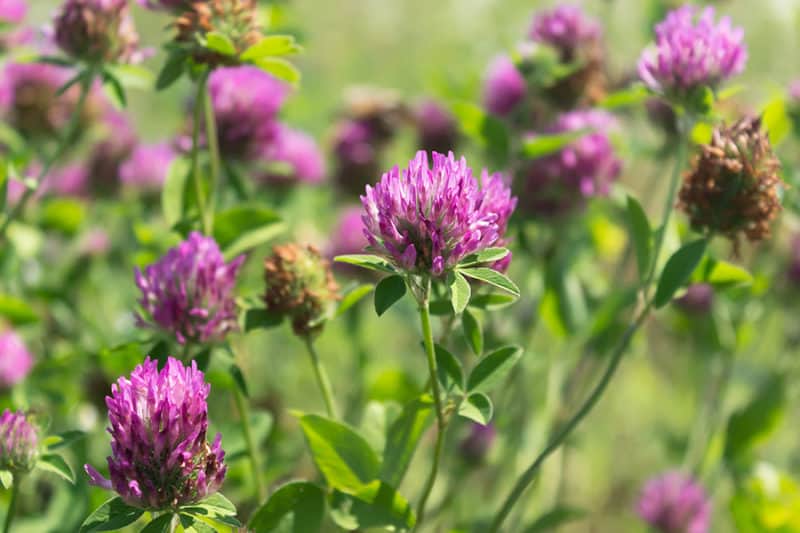
Red clovers take a bit longer to mature – 14 months after you sow seeds, in fact. This cover crop is a good choice for fields that are fallow but you would like to grow in at some point. You can grow red clover to fix nitrogen and improve heavy, compacted soils.
It’s one of the best options for wet or poor soil. It builds soil, but does so slowly – this one is best for long-term planners.
4. Field Peas
Field peas are some of the best at fixing nitrogen. They mature quickly – often, in less than 60 days – so you can get them in the ground before the last frost and then still be able to plant corn or other vegetables at a normal time.
Field peas can be tilled as soon as they start to flower. They help build soil and are a good forage crop. You can feed them to chickens, pigs, or other animals after harvesting them.
5. White Clover
White clover is a perennial that takes only 60 days to mature. It can be used for hay or pasture forage but is also good at building soil as green manure. It fixes nitrogen and also reduces compaction.
It’s not the best at smothering weeds, as it doesn’t grow that tall. However, you can frost seed it (sow it before the last frost) and till it under before you plant in the late spring.
5. Oats
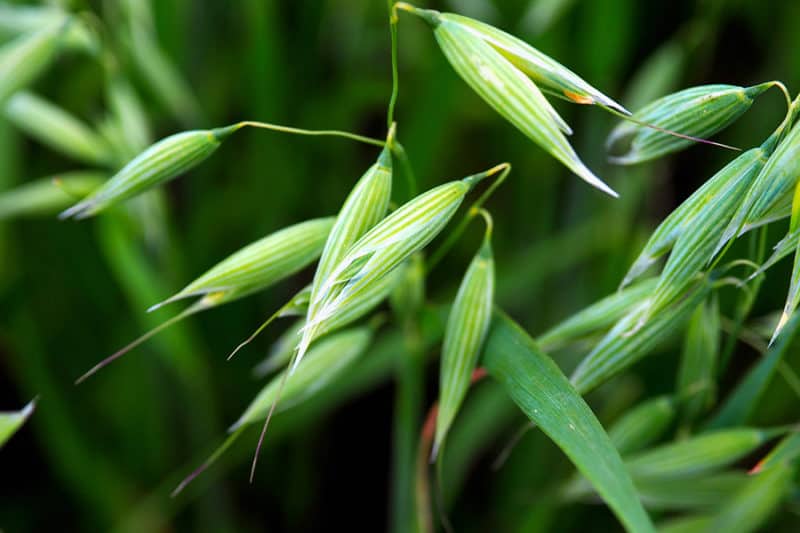
Oats grow quickly and can help prevent erosion. They also suppress weeds. You can use oats as a nurse crop for legumes or as hay for livestock. Sow oats in the early spring to summer. You probably won’t be able to plant a second crop afterward, though – oats will need up to 120 days to fully mature.
6. Annual Ryegrass
Annual ryegrass also helps to suppress weeds and control erosion. It can build the soil and is mature in just 50 days. The only challenge with ryegrass is that some plants can overwinter and become problem weeds.
7. Yellow Sweet Clover
Yellow sweet clover can be tilled in the spring to summer months. It needs soil temperatures of around 42°F. This cover crop is drought-tolerant and attracts beneficial insects. It doesn’t do well in waterlogged soil, but otherwise, it is great at building green manure and healthy soil.
This cover crop, again, is a good option in an area that you don’t intend to plant until later on. It is a good option for areas of your garden that you are giving a “time out” before planting in again the following year.
Should I Plant a Spring Cover Crop?
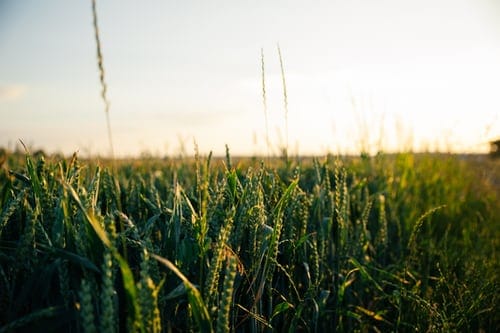
Though less common than winter cover crops, spring cover crops can offer gardeners plenty of benefits. More often than not, they are used in fields that will not be used during the current growing season. They can provide valuable nutrients, structure, and erosion control for unused areas.
However, they can also be used as a quick soil-booster if you get them in early enough in the spring.
When using spring cover crops, always consider your ultimate goals and plans. With some careful planning, you’ll be able to grow a healthy, thriving garden – all with the help of a simple cover crop.

